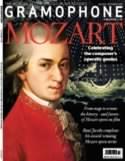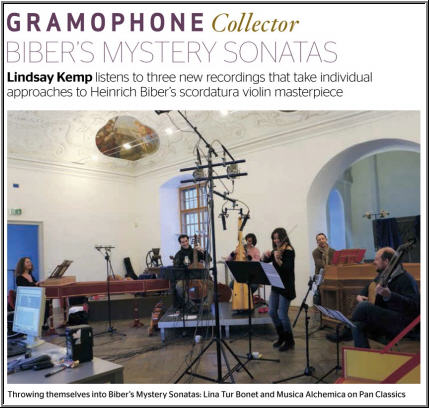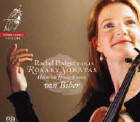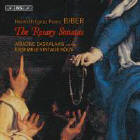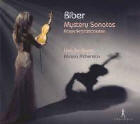Texte paru dans: / Appeared in: |
|
|
Outil de traduction (Très approximatif) |
|
|
Reviewer: Linday Kemp
How heartening it is to see new recordings of Biber continuing to come through, even well after the double boost they got from the composer’s two anniversaries in 1994 and 2004! Of all his music, it is surely the Mystery (or Rosary) Sonatas – 15 sonatas for violin and continuo, each representing an episode from the lives of Jesus and Mary corresponding to the sacred devotional ‘mysteries’ of the Rosary, with a solo passacaglia to finish – that not only provide the most stimulating listening but also the most fascinating insights into his way of thinking. Indeed, one could go further and claim them as one of the most profound and coherent instrumental cycles of the entire Baroque period. Approaches among players differ on a scale from seeking out all the descriptive detail they can find to relying more on the subliminal effects of the music’s symbolic and rhetorical gestures and constant scordature (each of the sonatas requires a different tuning system for the violin). All the successful ones, however, draw power from their depth of personal response, which is surely as it should be. This, after all, is music by a composer for whom the violin was a natural means of expression, a part of his being.
Of these three new recordings of the Rosaries, perhaps the most keenly anticipated will be that by Rachel Podger, ever a glorious example of someone who lives life through her violin. Yet although her booklet-note makes clear that she appreciates how the violin is made literally to ‘suffer’ through the dark retunings associated with Jesus’s death, she also states that she sees her own role as that of evangelist. This may, I suppose, be why her performances (in which she is joined by lutenist David Miller and keyboard player Marcin S ´ wia˛tkiewicz) are less directly involving than might have been expected. Of course she can play with grace and beauty – at the opening of ‘The Carrying of the Cross’, for instance, in the smooth Canzona of ‘The Coronation of the Blessed Virgin’ and throughout the Passacaglia (not a new recording, by the way, but taken from her ‘Guardian Angel’ solo disc – 11/13). There are also many subtleties of articulation and timing, almost as if there are words and pauses lying behind the notes, though sometimes these develop into lingerings that stretch the boundaries of continuity. Those used to Podger’s habitual natural exuberance may well find this recording surprisingly inward, even cool.
The Spanish violinist Lina Tur Bonet, with her ensemble Musica Alchemica, throws herself into the music more. Although her booklet-notes are full of erudite thoughts on theology and musical symbolism (and she has taken the trouble to photograph her violin in 16 carefully staged representative situations), it is the bold colours and fervent drama of her performances that will make the most immediate impact on listeners. The continuo section is rich (two keyboard players on four different instruments, plus a viola da gamba, a theorbo and a harp) and she relishes the varied timbres and resonances offered by the scordature – bitter in ‘The Presentation in the Temple’, dark and severe in ‘The Scourging’, open and singing in ‘The Ascension’. Above all, though, there is a grand theatricality in her manner that generates some memorable moments, from her approach from afar in ‘The Annunciation’ to the savage question-and-answer contrasts of ‘The Agony in the Garden’, and from the howling wind of ‘The Descent of the Holy Ghost’ to the festive procession, populated with gaily celebrating instruments (including spinettino), of ‘The Assumption of the Virgin’. To end, her Passacaglia is both lithe and affecting, the underpinning of its four-note descending bass impeccably timed.
One is also aware of variety of tone colour in the recording by American violinist Ariadne Daskalakis. Unlike Bonet or Podger, she uses four different violins; but though her natural sound is presumably the light and airy one of the conventionally tuned ‘Annunciation’, she is not afraid to make things ugly, as when she brings sourness to ‘The Scourging’, edge to the final section of ‘The Presentation in the Temple’ and glassiness to ‘The Nativity’. With the three continuo players of Ensemble Vintage Köln she produces stylish Biber-playing, though without quite managing the engaging level of interest these sonatas can attain. Her Passacaglia also seems misjudged: quicker than Podger’s or Bonet’s (and even at one point allowing in a little extra cadenza), it is more a violinistic afterword than the sombrely reflective chill-out its place in this great cycle demands. |
|
|
|
|
|
Cliquez l'un ou l'autre
bouton pour découvrir bien d'autres critiques de CD |
|
